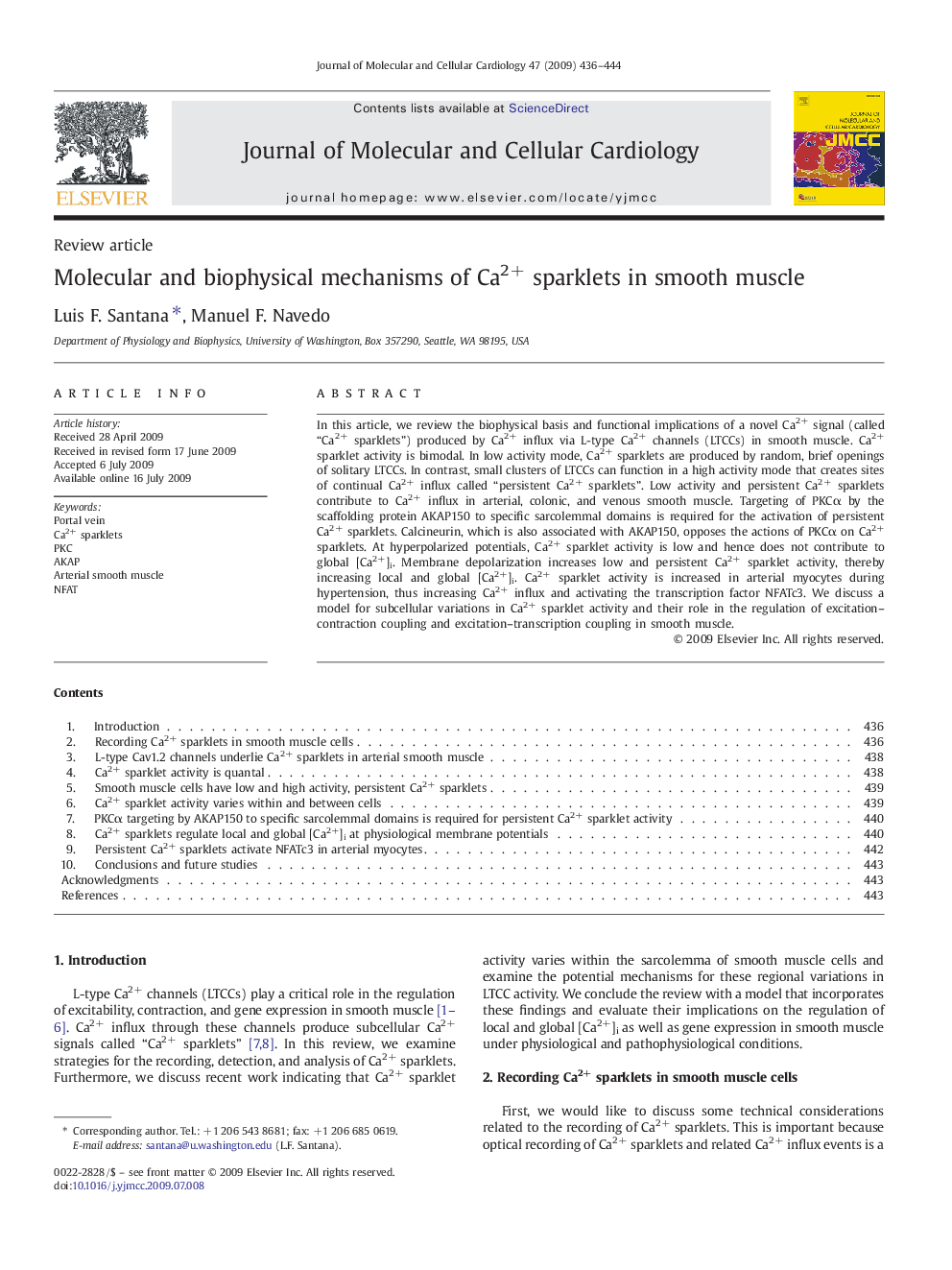| کد مقاله | کد نشریه | سال انتشار | مقاله انگلیسی | نسخه تمام متن |
|---|---|---|---|---|
| 2191176 | 1097850 | 2009 | 9 صفحه PDF | دانلود رایگان |

In this article, we review the biophysical basis and functional implications of a novel Ca2+ signal (called “Ca2+ sparklets”) produced by Ca2+ influx via L-type Ca2+ channels (LTCCs) in smooth muscle. Ca2+ sparklet activity is bimodal. In low activity mode, Ca2+ sparklets are produced by random, brief openings of solitary LTCCs. In contrast, small clusters of LTCCs can function in a high activity mode that creates sites of continual Ca2+ influx called “persistent Ca2+ sparklets”. Low activity and persistent Ca2+ sparklets contribute to Ca2+ influx in arterial, colonic, and venous smooth muscle. Targeting of PKCα by the scaffolding protein AKAP150 to specific sarcolemmal domains is required for the activation of persistent Ca2+ sparklets. Calcineurin, which is also associated with AKAP150, opposes the actions of PKCα on Ca2+ sparklets. At hyperpolarized potentials, Ca2+ sparklet activity is low and hence does not contribute to global [Ca2+]i. Membrane depolarization increases low and persistent Ca2+ sparklet activity, thereby increasing local and global [Ca2+]i. Ca2+ sparklet activity is increased in arterial myocytes during hypertension, thus increasing Ca2+ influx and activating the transcription factor NFATc3. We discuss a model for subcellular variations in Ca2+ sparklet activity and their role in the regulation of excitation–contraction coupling and excitation–transcription coupling in smooth muscle.
Journal: Journal of Molecular and Cellular Cardiology - Volume 47, Issue 4, October 2009, Pages 436–444